Original film title in Malay: Bujang Lapok
English title: The Mouldy Bachelors
Directed by P. Ramlee
Written by B. H. Chua (Chua Boon Hean) (story)
Language: Malay
Starring: P. Ramlee, S. Shamsuddin, Aziz Sattar, Zaiton, Normadiah, Dayang Sofia
Produced by Malay Film Productions (Shaw Bros.)
Film Locations:
Robinson Road, between Shaw’s Chamber & Nanyang Siang Pau Building
Kampong Tanjong Kling?
MacRitchie Reservoir
Ngee Ann Building (Orchard Road)
BUJANG LAPOK IS A DECEPTIVELY SIMPLE FILM that revolves around three over-aged bachelors who live in a boarding house and begin to fall in love with the ladies in their kampong neighbourhood. Directed by P. Ramlee and based on a story written by Chua Boon Hean 蔡文玄 – long-time manager of Shaw Organization’s Chinese Department and father of Chua Lam 蔡澜 the famous food critic and author – this Malay-language movie is a light–hearted comedy sprinkled with gentle humour and keen reflections on the modernizing (and represented as somewhat perverting) way of life among Malays in contemporary Singapore and newly-independent Malaya.
The film begins distinctly ‘on-location’ in downtown Singapore with a pan-and-tilt shot across Robinson Road and up the façade of the Nanyang Siang Pau 南洋商报 building (the brand-new seven-storey headquarters of the established Chinese press founded by Tan Kah Kee; it opened in January 1957 and was later renamed the ‘Afro-Asia Building’). The Nanyang Siang Pau building was located opposite the Shaw’s Chambers, then headquarters of the Shaw Organization, which was where the bachelors will leave from after a harsh day at work in the city, back to the comfort of their kampong on the outskirts.
We figured that the coastal kampong featured in this film might be Kampong Tanjong Kling at Jurong, after comparisons with similar kampong scenes in two other Shaw Brothers Malay movies made in the same year – Kembali Saorang and Taufan.
Though most of the scenes of the bachelors’ boarding house in the fictional kampong were filmed in the studio, outdoor panning shots of various parts of (what was presumably) Kampong Tanjong Kling were used as establishing shots at various junctures in the film. The coastal kampong was also the setting for a song in the movie, titled ‘Kampong Nelayan’ (Fishing Village), and “lip-synced” by Zaiton’s character when she is inspired by the rural way of life in the fishing village and her love for one of the bachelors. (The song was actually performed by popular singer Nona Asiah.)
Read more about Kampong Tanjong Kling in our location review of Kembali Saorang.
Further into the film, another P. Ramlee-composed song, ‘Resam Dunia’, exploits the serene settings of the popular MacRitchie Reservoir. It was then a favoured dating spot with lovers. And it was also extremely popular with filmmakers from the Shaw Brothers’ studios for outdoor shoots, probably since Jalan Ampas was merely a stone’s throw away. We reckon that no less than ten Malay Film Productions movies had used MacRitchie Reservoir as a backdrop in scenes associated with dating, fighting (especially at night), loneliness or despair.
Towards the film’s end, Orchard Road’s Ngee Ann Building appears briefly where P. Ramlee’s character Ramli meets a friend traveling on a trishaw. The two of them engage in some small talk, and go on their separate ways. Ramli then crosses the road and gets “teleported”, through the magic of film editing, to Robinson Road.
The Ngee Ann Building along Orchard was a 3-million dollar housing project built over the old Tai San (Tai Sun; 泰山亭) Teochew Chinese cemetery owned by Ngee An Kongsi, which was (and still is) one of the largest Teochew clan associations in Singapore, founded by Seah Eu Chin in 1845. The proposal for the new residential development was in view of Orchard Road fast becoming a shopping district, and the continued existence of the disused burial site was thus found wanting. Mass exhumation of the graves, numbering nearly 20,000, began in September 1951. The remains were reinterred at a Chinese cemetery at the 12th mile, Seletar. After much delay, the construction of the ten-storey Ngee Ann Building, designed by local architect Ng Keng Siang (of Asia Insurance Building fame), finally commenced in August 1955, and was completed by mid-1957. Around the time of its completion, The Straits Times had also reported Run Run Shaw’s forecast for that part of Orchard Road to be transformed into one of the city’s leading business areas, after announcing their own plans for the neighbouring site at the junction of Orchard Road and Scotts Road. This might cursorily explain why Bujang Lapok contains the very brief and rather inconsequential on-location scene at Orchard Road.
The Ngee Ann Building was later demolished in 1985 to make way for a new shopping-cum-office complex – Ngee Ann City.
Further Reading:
1. ‘New Malay film of love in a boarding house’. The Straits Times. 29 November 1957, p. 10.
2. ‘Hal Ahwal Film: Kursus filasafah tidak memberi kesan baik’. Berita Harian. 6 December 1957, p. 7.
3. Amir Muhammad, 120 Malay Movies (pp. 122-124). Petaling Jaya: Matahari Books, 2010.
4. Jurong. Singapore Infopedia. National Library Board, 2004.
5. Macritchie Reservoir. Singapore Infopedia. National Library Board, 2004.
6. ‘Flats planned on old cemetery: ‘Kongsi’ debates development’. The Singapore Free Press. 17 September 1948, p. 5.
7. ‘‘$500m.’ burned to pacify dead’. The Straits Times. 2 September 1951, p. 9.
8. ‘Going up now – a new tall building’. The Straits Times. 5 August 1955, p. 5.
9. ‘Millions to be spent on Orchard Road’. The Straits Times. 19 June 1957, p. 5.
10. Ngee Ann City. Singapore Infopedia. National Library Board, 013.
Film Images:
© 1957 Malay Film Productions
© 2002 Music Valley
Digital Map Source:
Great Britain. Ordnance Survey, Singapore Island, National Library of Australia, MAP G8040 1941. [http://nla.gov.au/nla.map-vn1900708]
Photographs:
© 2014 Toh Hun Ping

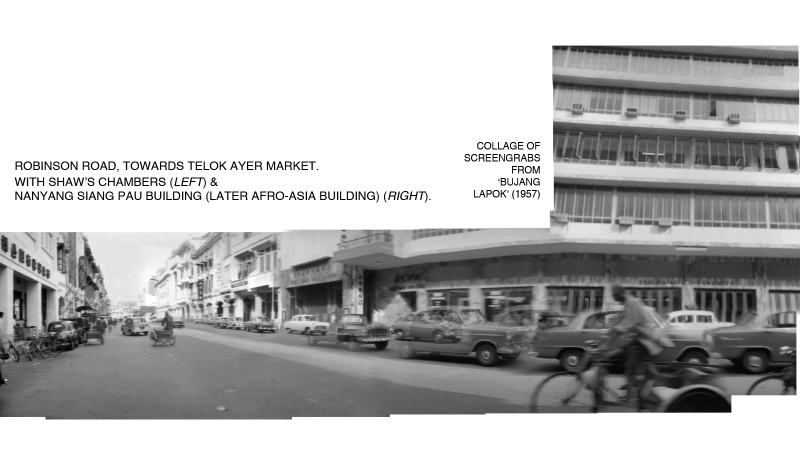
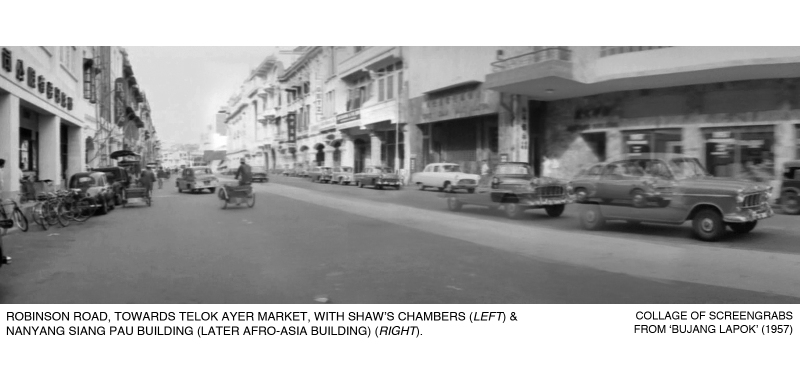
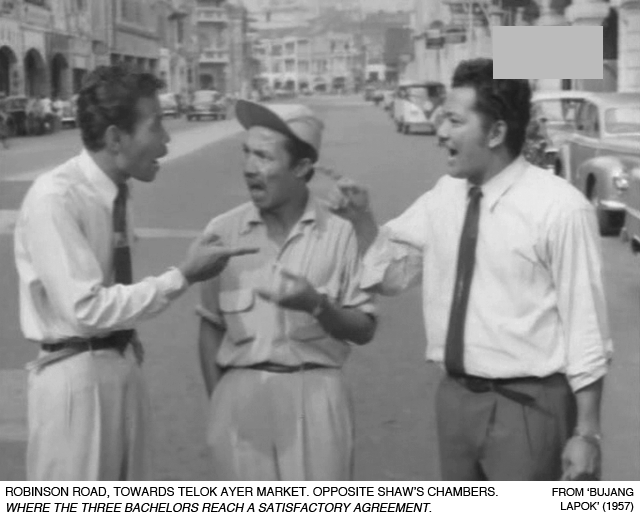
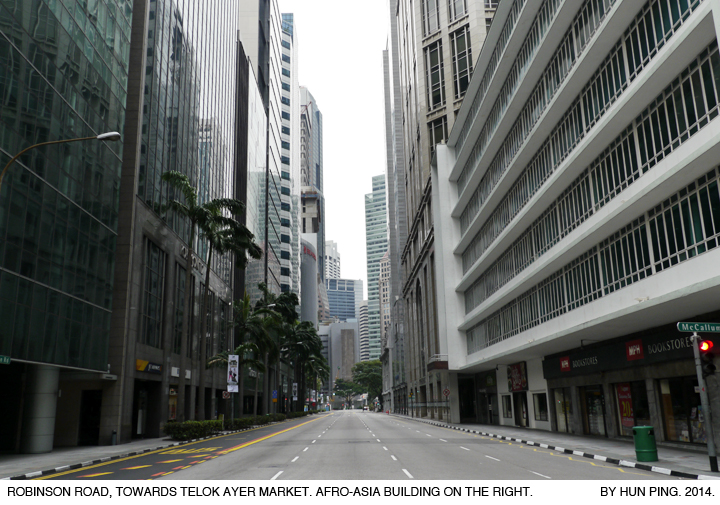
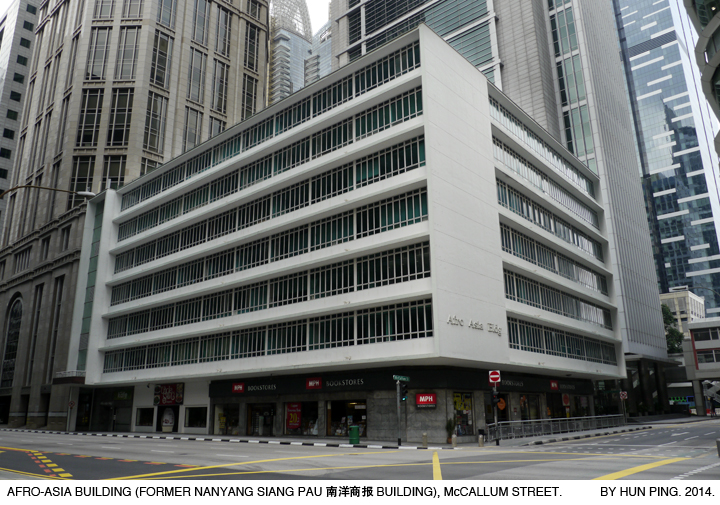
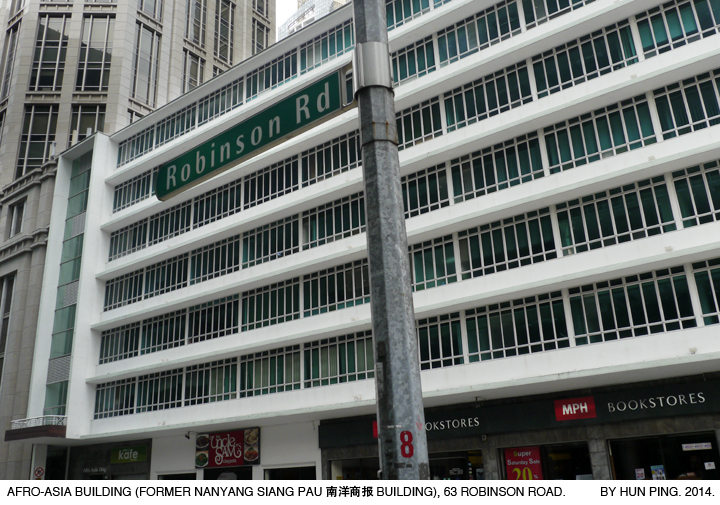
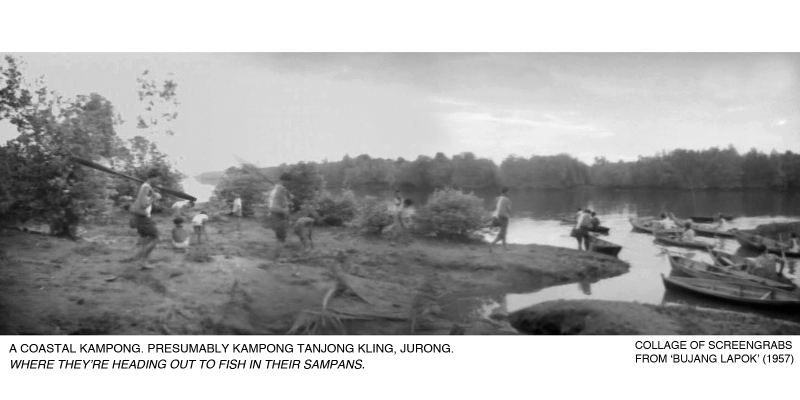
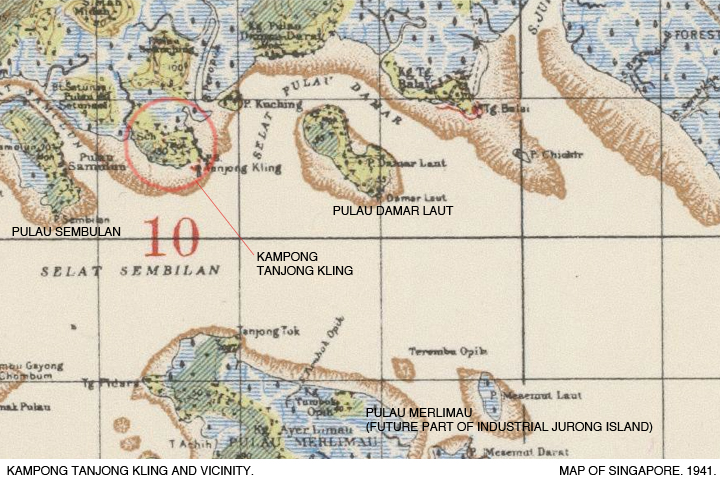
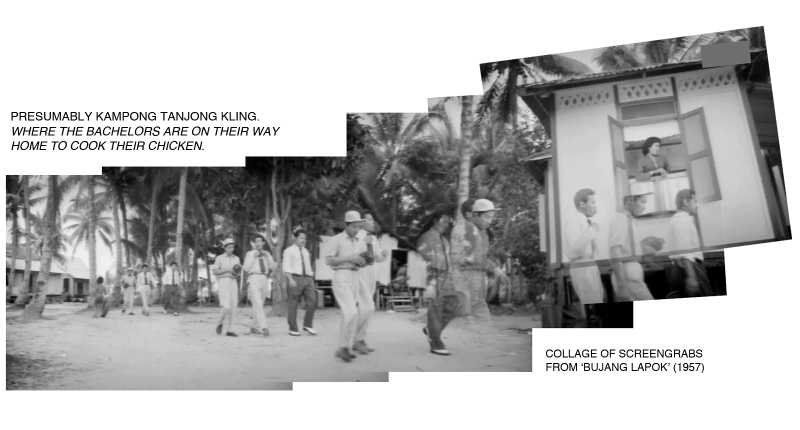
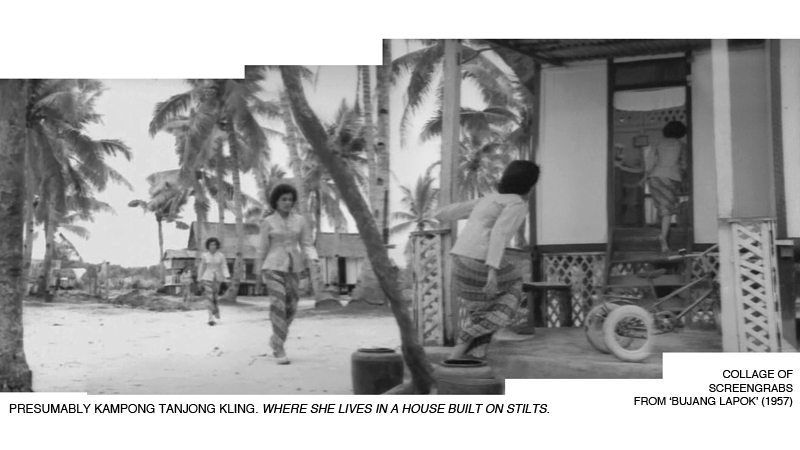
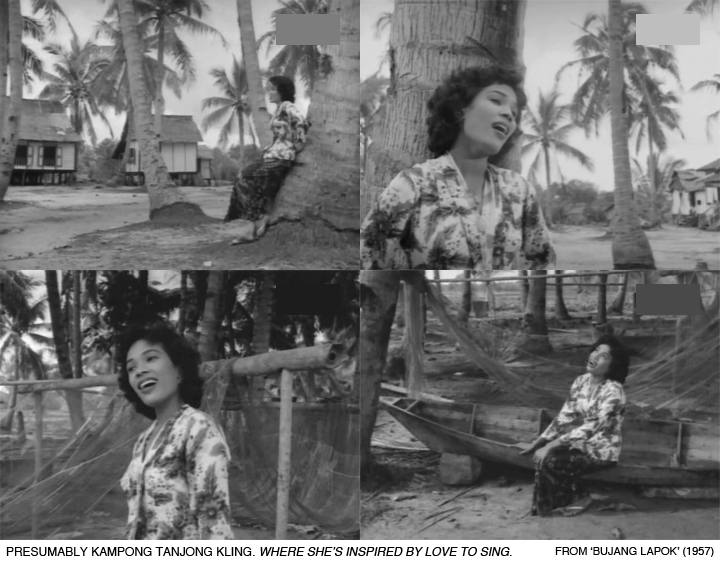
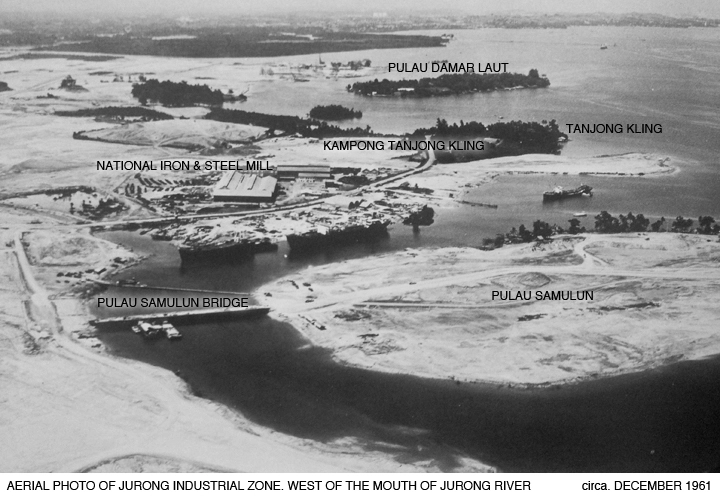
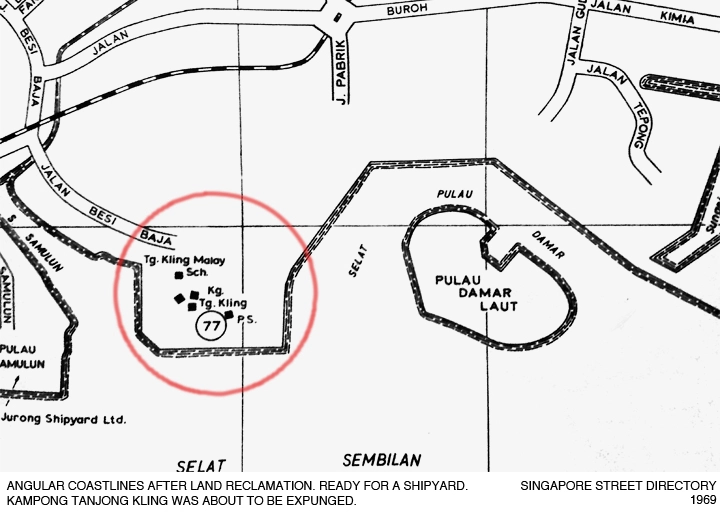
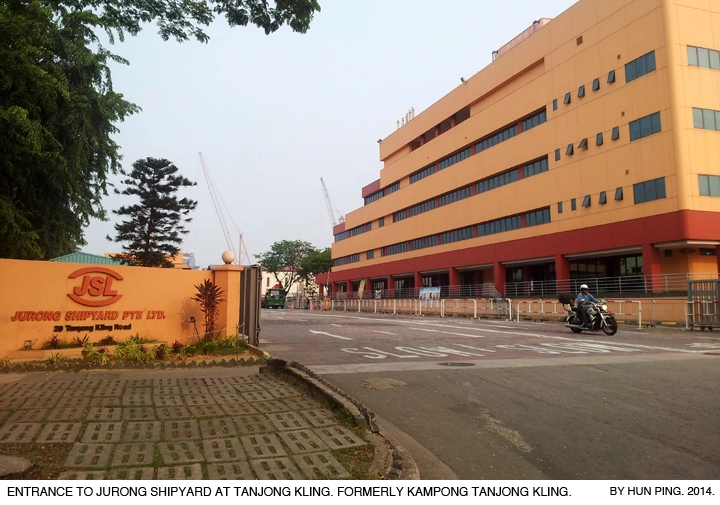
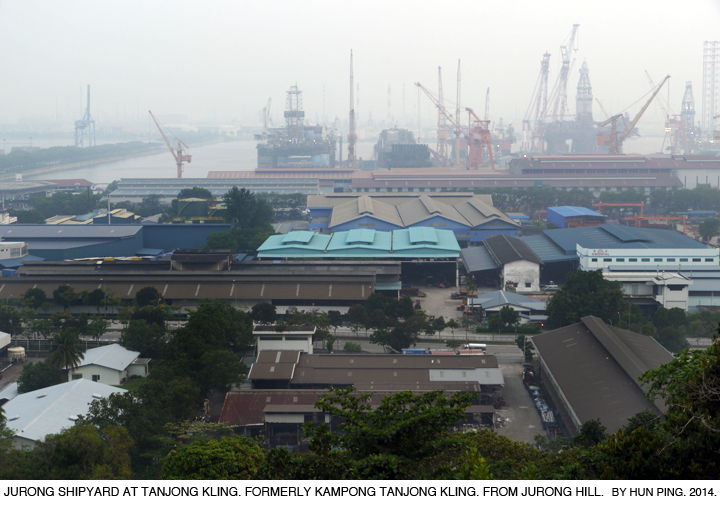
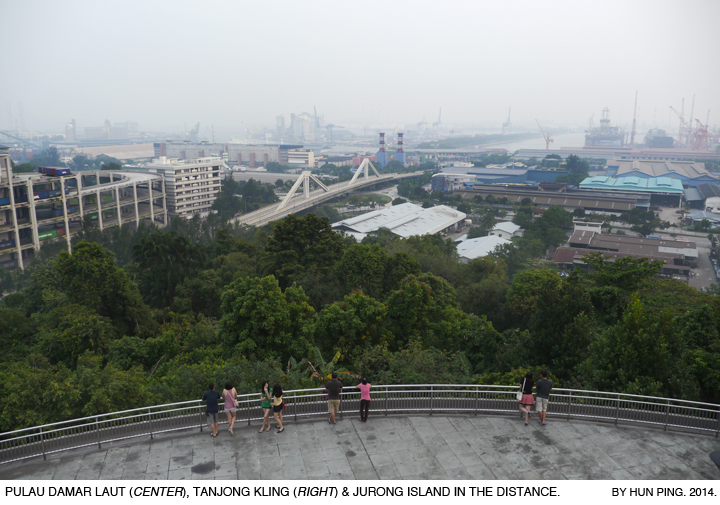
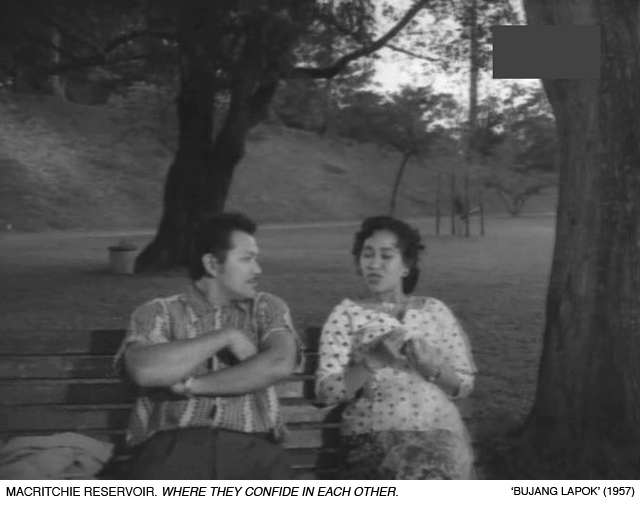
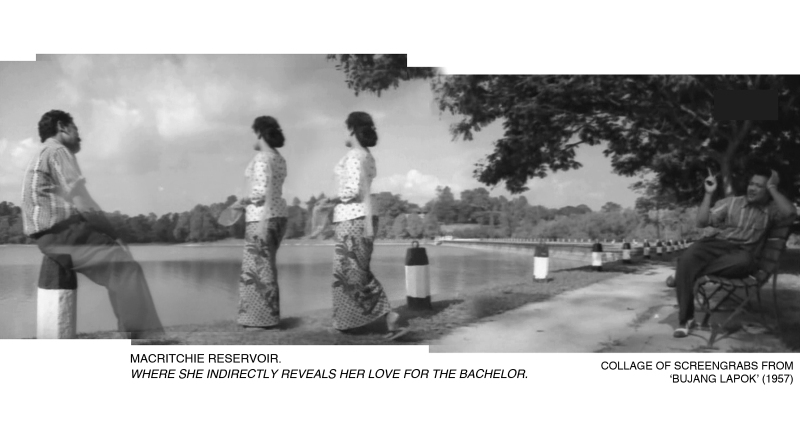

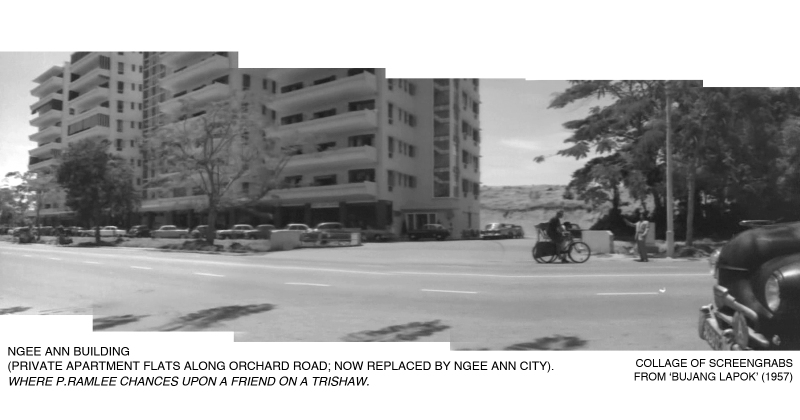
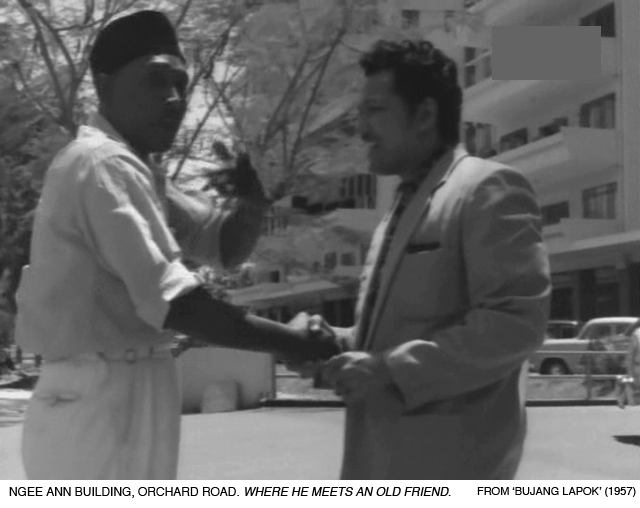
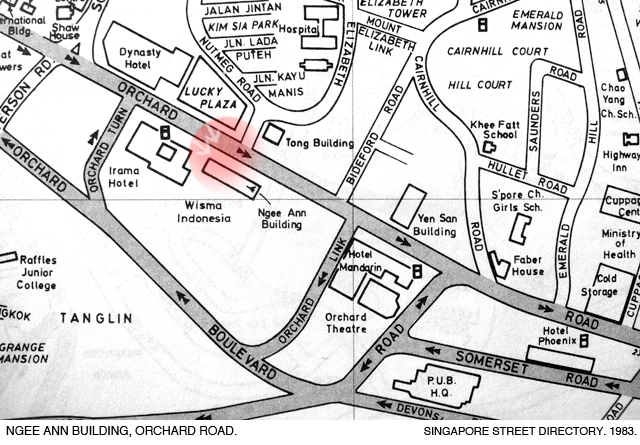
I lived in Tanjung Kling between 1957-1963. My father was a school teacher at Tanjung Kling Primary School. The sequel to this movie (Seniman Bujang Lapok) was definitely shot at Tanjung Kling, infact my house can be seen at the back during the bicycle chase scene. I was also paid a small sum to be involved in some of the scenes. One more thing that i remembered was my house being used as a “changing/dressing” room during the filming of another Shaw brother’s movie Si Tanggang.
Thank you Brotherrock! I have seen ‘Seniman Bujang Lapok’, but was uncertain which kampong was used as the film location. Now, you have confirmed it.
Were you referring to the scene where Ramlee, Aziz and Shamsuddin were singing ‘Mencece Bujang Lapok’ and riding together on single bicycle? Did you appear in the film? Which scenes?
Thank you too for pointing out the ‘Si Tanggang’ was also filmed at Tanjong Kling!
What you have shared are very helpful. I’ve yet to published my posts on the 1960s Malay films. Will find time to do it by the end of the year, I hope.
Thanks again.
Hun Ping